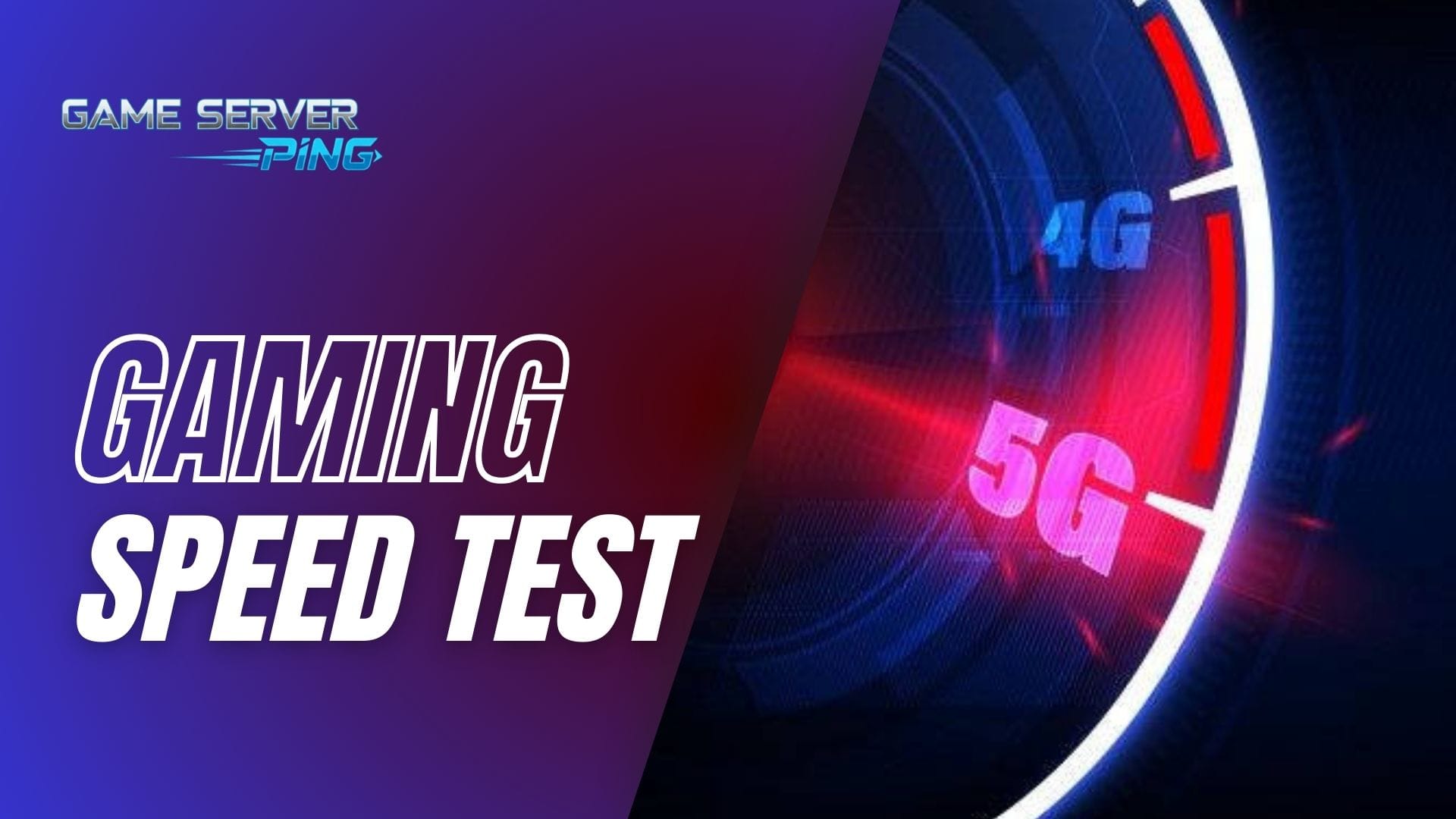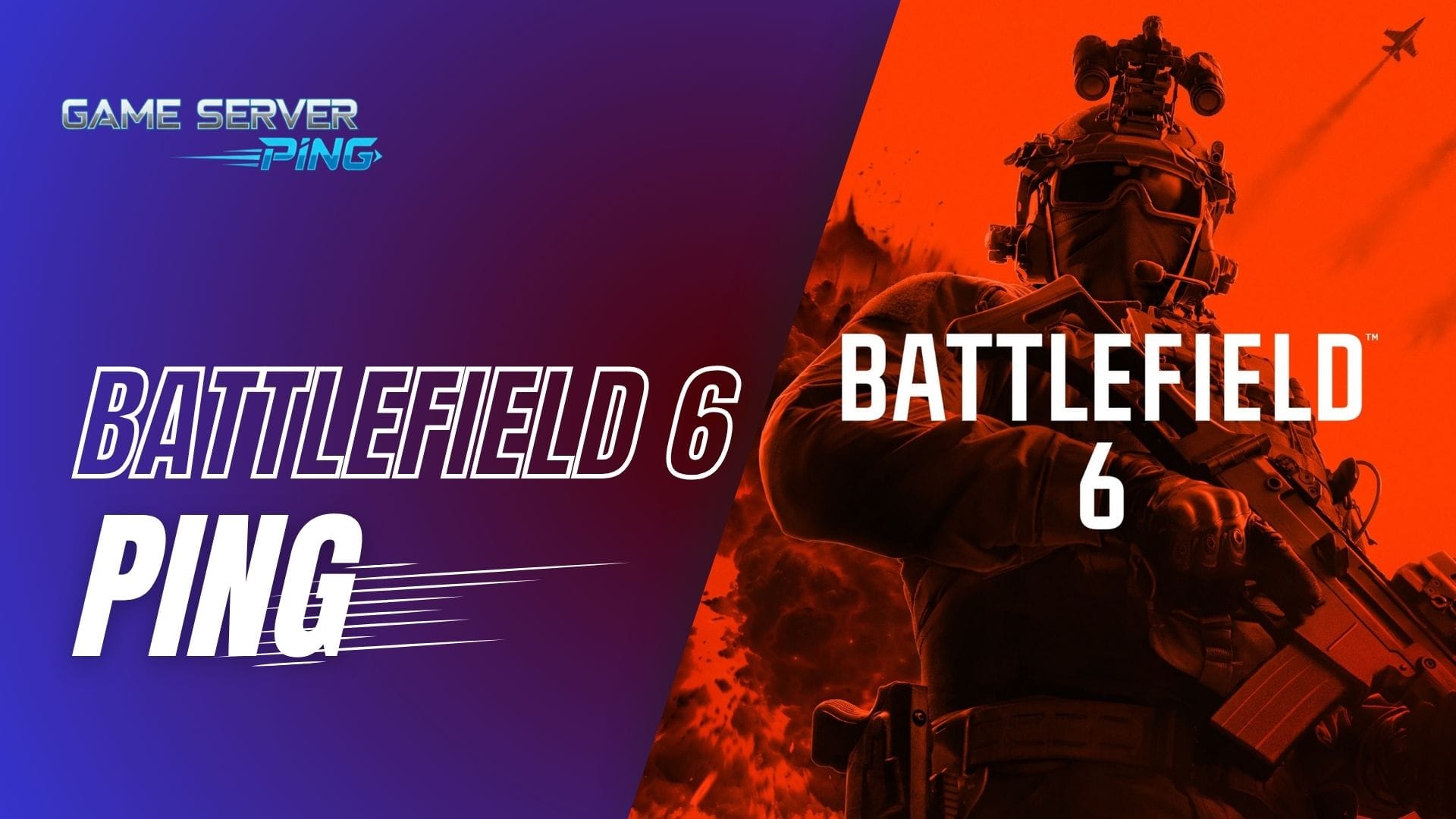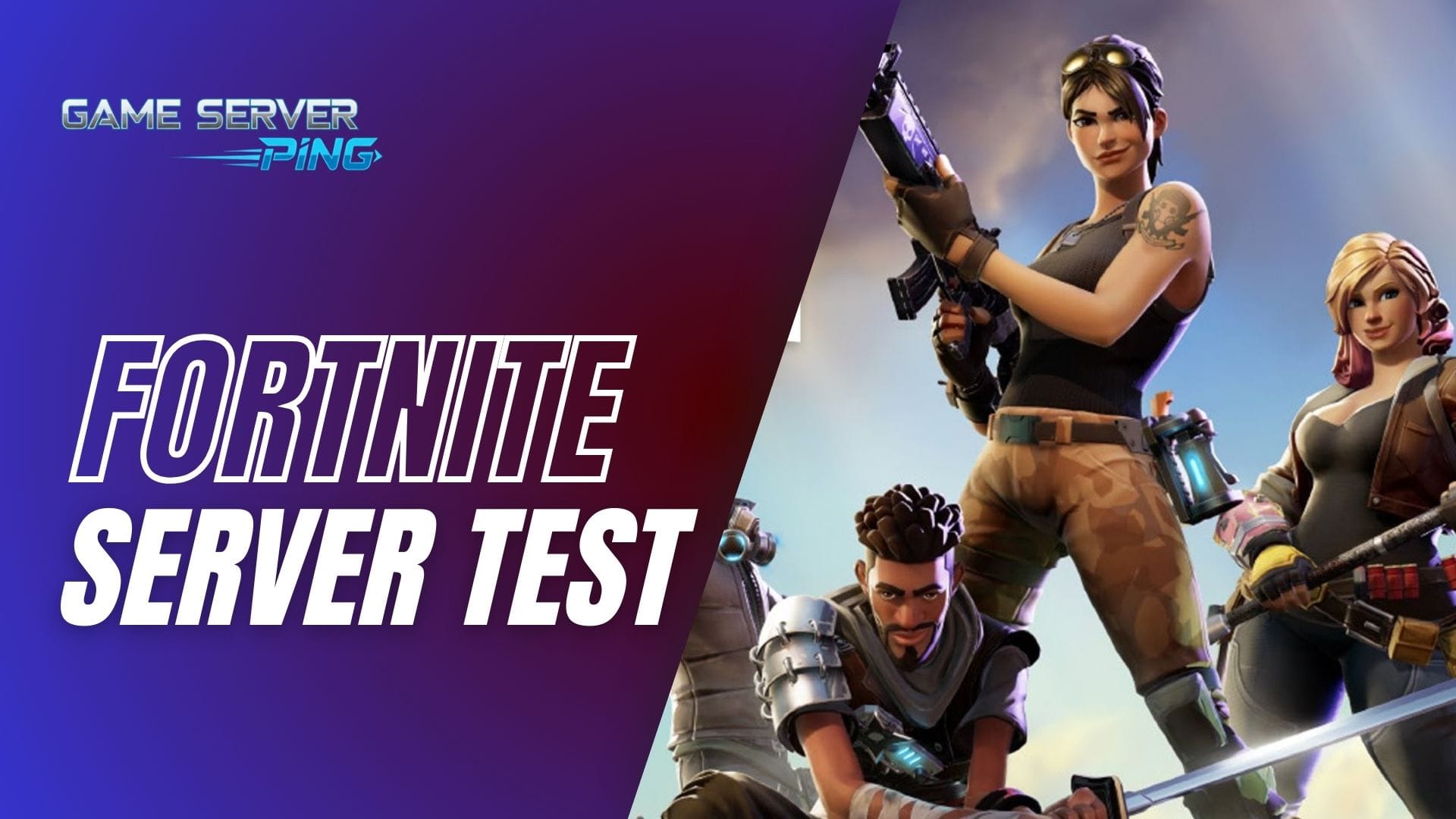Now Reading: Internet Speed Test For Online Gaming
- 01
Internet Speed Test For Online Gaming

Internet Speed Test For Online Gaming
If you’ve ever wondered why your internet feels smooth while streaming Netflix but starts lagging in the middle of a Fortnite or Valorant match, you’re not alone. Most generic internet speed tests only measure download and upload speeds—but that’s not the full picture for gaming.
That’s why we built this Gaming Speed Test, designed specifically for players. Instead of just showing Mbps, it measures the metrics that actually decide whether your game runs smoothly or stutters at the worst possible moment.
Also Check Your ISP
Try it out below before diving into the details:
Online Gaming Speed Test Live
Internet Speed Test For Online Gaming
Use this free Gamer Speed Test tool to measure your ping (latency), jitter, download speed, upload speed, network consistency, and responsiveness. Quickly find out if your internet connection is strong enough for online gaming, streaming, and esports.
🎮 Recommended Mode: --
Gamer-Centric Metrics Beyond Mbps
Most people are familiar with running a speed test. You hit a button, and within seconds you’re given your download and upload speeds. Those numbers look impressive—“200 Mbps download, 50 Mbps upload”—but here’s the truth: for gamers, those results only tell half the story.
When you’re in a competitive match, whether it’s Valorant or Fortnite, raw internet speed doesn’t matter nearly as much as how stable and responsive your connection is. That’s where our Gamer Speed Test is different. It goes beyond Mbps and digs into the measurements that directly affect your in-game performance.
Here’s why each metric matters for gamers:
- Ping (Latency):
Ping measures how quickly your device communicates with the game server. Even if you have lightning-fast download speeds, a high ping can cause noticeable delays between your actions and what happens on screen. For competitive shooters like Valorant, even a difference of 20–30 ms can decide whether you win or lose a duel. - Jitter:
Jitter shows how much your latency fluctuates. A stable 30 ms ping feels smooth, but if it constantly jumps from 30 to 100 to 50, your gameplay will feel inconsistent. This is why some players say, “My ping looks fine, but I’m still lagging.” - Consistency & Stability:
Our tool calculates a consistency score and a stability score, which measure how reliable your connection remains throughout the session. Many gamers overlook this, but unstable connections cause micro-freezes and packet loss that ruin matches. - Responsiveness:
While generic speed tests don’t even consider this, we show you how reactive your network is to real-time actions. This is crucial for games where every millisecond counts, such as first-person shooters or competitive esports.
By combining these metrics, our tool paints a complete picture of your connection health, something no regular speed test can do. It’s the difference between knowing your car has a full tank of gas (download/upload speeds) versus knowing whether the engine runs smoothly, the tires grip properly, and the brakes respond on time (gaming-specific metrics).
If you mainly play shooters, our tool gives you the advantage of understanding not just whether your internet “works,” but whether it’s truly optimized for gaming. For Valorant players in particular, this is a game-changer. If you’d like to see how your connection stacks up for Riot’s servers specifically, you can try our Valorant Ping Test.
Real-Time Gaming Performance Insights
One of the biggest frustrations for gamers is when your internet speed test tells you everything looks fine, but once you log into a match, the experience feels completely different. Shots don’t register, movements feel delayed, or your character skips across the map. Traditional speed tests simply aren’t designed to reveal these issues—but our Gamer Speed Test is.
What sets it apart is the real-time gaming performance insights it provides. Instead of only giving you a snapshot of raw speed, our tool simulates conditions that are much closer to what actually happens when you play online games.
Here’s what that means in practice:
- Simulating Game Traffic:
Generic speed tests measure large chunks of data moving between your device and a test server. Gaming, however, is about small, constant packets of information: your movement, your actions, the server’s response. Our test mimics this kind of data flow, giving you results that actually reflect in-game performance. - Capturing Moment-to-Moment Stability:
When you play Valorant or Fortnite, your experience depends on stability second by second. A single spike in latency or a burst of jitter can mean missing a critical shot. Our test monitors these fluctuations in real time, not just average speeds, so you can see exactly where problems might occur. - Visualizing Connection Health:
Instead of handing you numbers with no context, our Gamer Speed Test breaks down how each factor—ping, jitter, stability, and responsiveness—contributes to your overall gameplay experience. Think of it as a health bar for your internet connection. - Actionable Insights, Not Just Numbers:
The real benefit comes when you can connect the results with actual gameplay. For example:- If your ping is steady but jitter is high, you’ll know that your lag spikes are the main issue.
- If your download speed is fine but responsiveness is poor, it means your network is struggling to handle game requests in real time.
For gamers, these insights are more than technical data—they’re direct explanations for what you feel in the middle of a match. If your game feels “off,” our tool tells you why.
This is especially useful when troubleshooting across different games. Maybe Valorant feels smooth, but Fortnite lags unpredictably. With our tool, you can test and compare your results game by game. If Fortnite is your main battleground, you can check your connection with our dedicated Fortnite Ping Test to see if Epic Games’ servers are the cause.
At the end of the day, speed test numbers alone won’t make you a better player—but knowing the real-time behavior of your connection will give you the clarity to fix issues, upgrade your setup, or even adjust when and where you play.
Stability Scores Explained
When gamers talk about their internet, most conversations circle around speed—“I have 200 Mbps download” or “my upload is 20 Mbps.” But here’s the thing: raw speed isn’t what makes or breaks your gaming experience. Stability is.
Imagine this: you’re in the middle of a ranked Valorant match, holding an angle. Your ping looks fine at 40ms. Suddenly, your crosshair skips, your opponent appears a split second late, and you lose the duel. That’s not because your download speed dropped—it’s because your connection lacked stability.
This is where our Gamer Speed Test stands apart. It introduces stability scores, a measure of how consistent your connection is over time. Instead of just reporting averages, it analyzes the flow of data packet by packet, second by second, to see if your internet holds steady under pressure.
What Stability Scores Actually Mean
- High Stability Score (Good): Your connection is smooth, with little to no variance in latency or packet delivery. This means you’ll experience steady gameplay, even in fast-paced shooters like Valorant.
- Moderate Stability Score (Okay): Your connection works fine most of the time, but small fluctuations might cause the occasional lag spike or rubberbanding.
- Low Stability Score (Bad): Your network is unpredictable. You might see consistent spikes, delayed responses, or moments where the game feels unplayable.
Why Stability Beats Raw Speed
- A gamer on 50 Mbps but with excellent stability will usually perform better online than someone on 200 Mbps with constant jitter.
- Stability impacts aim consistency, reaction time, and overall confidence while playing. If you’re second-guessing whether your shot will register, your performance suffers.
How Our Tool Calculates Stability
The Gamer Speed Test doesn’t just fire off one big data packet. It sends multiple smaller ones, the way online games do. By measuring how consistently those packets arrive and how much variation there is between them, it creates a stability profile of your network.
Think of it like comparing two highways:
- One with a constant, steady flow of cars (high stability).
- Another with cars stopping, accelerating, and slowing unpredictably (low stability).
Which one would you trust to get you to your destination on time? Exactly—the steady one.
Why Gamers Should Care
At the end of the day, speed tests give you bragging rights, but stability scores give you real performance confidence. If your stability is high, you’ll play with fewer excuses, fewer losses to lag, and a better shot at ranking up.
Latency, Jitter, and Responsiveness – The Trio Gamers Care About Most
If you ask a casual internet user what makes a good connection, they’ll almost always say “speed.” But if you ask a gamer, the answer is different. For us, the three most important factors are latency, jitter, and responsiveness. These aren’t just buzzwords—they directly decide whether your bullets land, your movements feel smooth, and your overall gameplay feels fair.
Let’s break them down in plain English.
Latency: Your Reaction Time Online
Latency—often referred to as ping—is the delay between pressing a key or clicking your mouse and seeing the result happen in the game.
- A latency of 20–40ms feels buttery smooth in most games.
- Anything above 80ms starts to feel sluggish.
- Once you’re over 100ms, every movement and shot feels delayed, which can ruin competitive play.
For example, in Valorant, even a 30ms advantage can mean landing the first shot and winning the round. That’s why low latency is critical for serious players.
Jitter: The Hidden Enemy
You might have decent latency, but if jitter is high, your connection becomes unpredictable. Jitter measures how much your latency fluctuates over time.
- Low jitter = consistent performance.
- High jitter = random lag spikes, rubberbanding, or characters teleporting.
Imagine playing Fortnite, running into a final 1v1, and suddenly your character freezes for half a second while the enemy keeps moving. That’s not “lag”—that’s jitter.
Responsiveness: The Gamer’s Edge
Responsiveness goes a step further than latency. It measures how quickly your network processes multiple requests at once.
- Online games constantly send micro-updates: movement, shooting, hit registration, ability use.
- If your connection can’t keep up, you’ll feel a delay, even if your raw ping looks fine.
This is why our Gamer Speed Test includes responsiveness as a metric—because it reflects the “snappiness” of your gameplay, not just the numbers.
Why the Trio Matters Together
Here’s the thing: latency, jitter, and responsiveness don’t work in isolation. They combine to shape your overall experience.
- Low latency + low jitter + high responsiveness = a flawless connection.
- Low latency + high jitter = frustrating spikes and unpredictable gameplay.
- High latency + low jitter = delayed but steady gameplay (not ideal, but at least predictable).
Our tool doesn’t just measure these factors—it shows you how they interact so you can pinpoint exactly what’s going wrong.
Why This Trio Is the True Gamer Benchmark
At the end of the day, Mbps doesn’t win gunfights—milliseconds do. By focusing on latency, jitter, and responsiveness, our Gamer Speed Test gives you the metrics that actually matter in the heat of competition.
So next time someone brags about their “1 Gbps internet,” ask them what their jitter looks like. Chances are, the answer explains why you’re winning more fights than they are.
Bandwidth Isn’t Everything – Why Consistency Wins in Gaming
Whenever internet plans are advertised, the first thing you see is bandwidth—“Get up to 500 Mbps download speed!” or “Enjoy 1 Gbps ultra-fast internet.” It sounds impressive, and for streaming movies or downloading large files, it absolutely matters. But here’s the truth: gaming doesn’t need massive bandwidth. What it needs is consistency.
Why High Bandwidth ≠ Smooth Gaming
Online games don’t actually use that much data.
- Valorant, for example, only uses about 200–250 MB of data per hour.
- Fortnite ranges between 100–300 MB per hour.
That’s tiny compared to watching Netflix in 4K, which can use 7 GB per hour.
So even if you had a modest 20 Mbps plan, you’d still have enough bandwidth to play without issue. The problem comes when your connection isn’t consistent—when packets of game data get delayed, lost, or arrive out of order.
Why Consistency Matters More
- Predictable Performance: A consistent 40 Mbps connection will feel smoother than an inconsistent 200 Mbps one.
- No Random Spikes: Spikes in ping or packet loss, even for just a second, can ruin an entire clutch round in Valorant or cost you a Victory Royale in Fortnite.
- Shared Networks: If multiple people in your home are streaming, downloading, or on video calls, inconsistent bandwidth distribution can cause micro-lags in your game.
How Our Gamer Speed Test Measures Consistency
Instead of only showing you maximum speeds, our tool analyzes how steady your connection stays across multiple tests.
- Stable Curve: A smooth, predictable flow of data. Perfect for gaming.
- Uneven Curve: Inconsistent performance, where your speeds might peak high but dip suddenly. This is what creates in-game stutter.
Real-World Example
Think of it like driving a car:
- A steady 60 mph on a highway (consistent connection) feels smooth and controlled.
- A car that jumps from 30 mph to 80 mph to 50 mph, even if it averages 60 mph, feels chaotic (inconsistent connection).
Bottom Line
Don’t get caught up in marketing hype about gigabit speeds. A smaller but consistent connection always beats a flashy high-speed plan when it comes to gaming. Our Gamer Speed Test is built around this principle, giving you insights that actually matter in-game.
Why does my internet speed test show fast results, but I still lag in games?
This is one of the most common frustrations. Regular speed tests only focus on download and upload speeds, but gaming relies heavily on ping, jitter, and consistency. Even with a 200 Mbps connection, if your ping is unstable or jitter spikes every few seconds, you’ll feel lag, rubber-banding, or delayed shots. That’s why a gamer-focused test is better—it checks the factors that truly affect gameplay.
My ping looks fine, but sometimes I “teleport” or rubber-band in matches. What causes that?
This issue usually comes down to jitter or packet loss. Ping measures the average delay, but jitter measures the variation in that delay. If packets arrive at uneven intervals, the game client struggles to process movement, making you teleport around. Our Gamer Speed Test tracks jitter so you can see if that’s the hidden cause of your in-game stutter.
Does higher download speed improve my gaming performance?
Not necessarily. Games don’t need much bandwidth (usually 100–300 MB per hour). What matters most is a stable, low-latency connection. A consistent 30 Mbps with low ping will outperform a 300 Mbps line with jitter and instability. Think of it like racing—speed is nice, but smooth handling is what wins the game.
Why does my ping jump randomly during competitive matches but not when running a speed test?
Standard speed tests run for a short period and often connect to the closest test server. Gaming sessions, however, last much longer and may connect you to distant or overloaded servers. That’s why you see sudden spikes mid-match. Our tool runs extended checks and measures responsiveness, stability, and real-time fluctuations—things a quick generic test won’t reveal.











